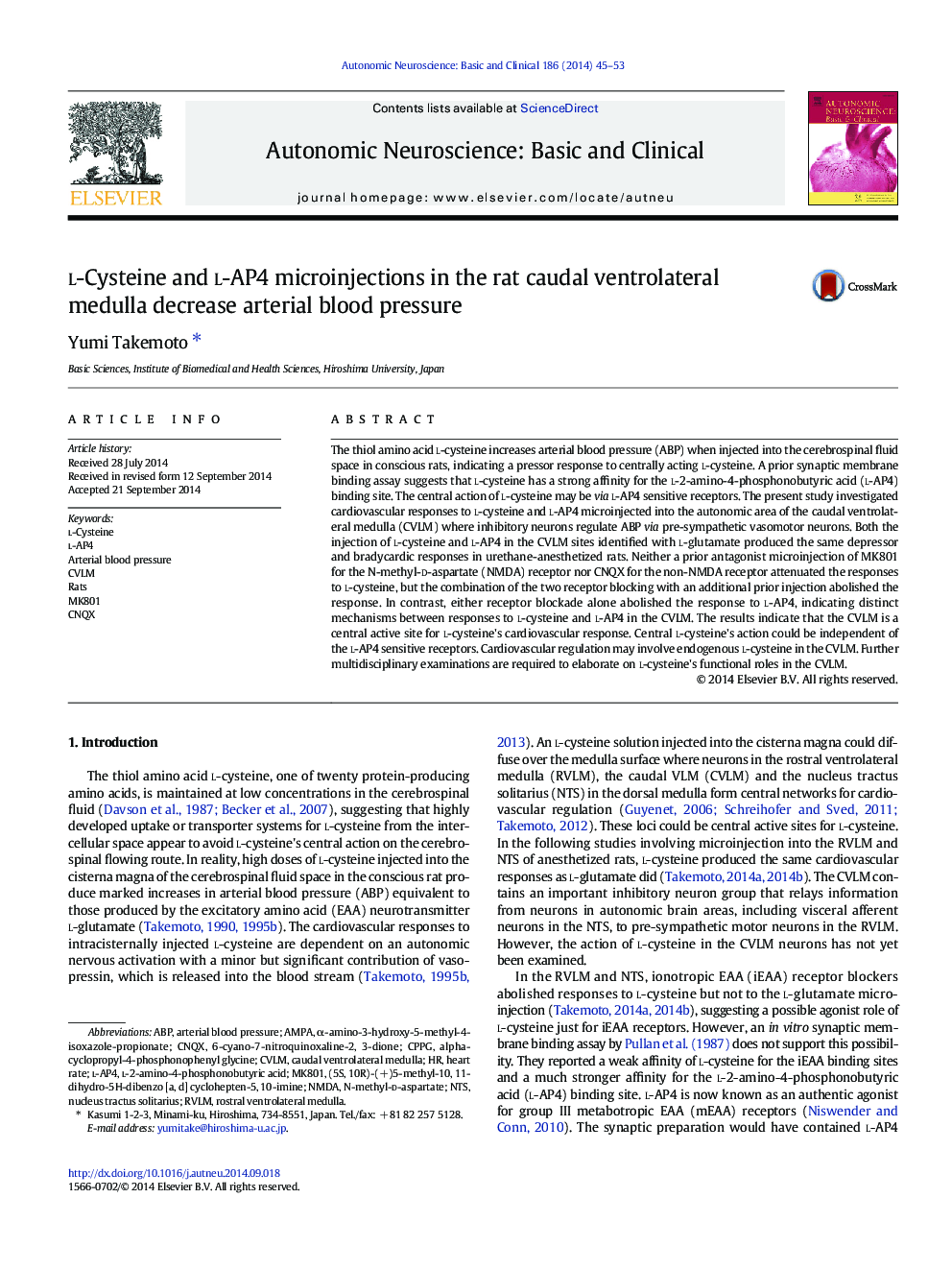| Article ID | Journal | Published Year | Pages | File Type |
|---|---|---|---|---|
| 3034655 | Autonomic Neuroscience | 2014 | 9 Pages |
Abstract
The thiol amino acid l-cysteine increases arterial blood pressure (ABP) when injected into the cerebrospinal fluid space in conscious rats, indicating a pressor response to centrally acting l-cysteine. A prior synaptic membrane binding assay suggests that l-cysteine has a strong affinity for the l-2-amino-4-phosphonobutyric acid (l-AP4) binding site. The central action of l-cysteine may be via l-AP4 sensitive receptors. The present study investigated cardiovascular responses to l-cysteine and l-AP4 microinjected into the autonomic area of the caudal ventrolateral medulla (CVLM) where inhibitory neurons regulate ABP via pre-sympathetic vasomotor neurons. Both the injection of l-cysteine and l-AP4 in the CVLM sites identified with l-glutamate produced the same depressor and bradycardic responses in urethane-anesthetized rats. Neither a prior antagonist microinjection of MK801 for the N-methyl-d-aspartate (NMDA) receptor nor CNQX for the non-NMDA receptor attenuated the responses to l-cysteine, but the combination of the two receptor blocking with an additional prior injection abolished the response. In contrast, either receptor blockade alone abolished the response to l-AP4, indicating distinct mechanisms between responses to l-cysteine and l-AP4 in the CVLM. The results indicate that the CVLM is a central active site for l-cysteine's cardiovascular response. Central l-cysteine's action could be independent of the l-AP4 sensitive receptors. Cardiovascular regulation may involve endogenous l-cysteine in the CVLM. Further multidisciplinary examinations are required to elaborate on l-cysteine's functional roles in the CVLM.
Keywords
CVLMl-2-amino-4-phosphonobutyric acidα-amino-3-hydroxy-5-methyl-4-isoxazole-propionateCPPGl-AP4ABPMK801RVLMNTSN-methyl-d-aspartateNMDAAMPA6-cyano-7-nitroquinoxaline-2, 3-dionel-Cysteinerostral ventrolateral medullaCNQXHeart rateArterial blood pressurecaudal ventrolateral medullaRatsnucleus tractus solitarius
Related Topics
Life Sciences
Neuroscience
Cellular and Molecular Neuroscience
Authors
Yumi Takemoto,
